
A crane fly is any member of the dipteran superfamily Tipuloidea, which contains the living families Cylindrotomidae, Limoniidae, Pediciidae and Tipulidae, as well as several extinct families. "Winter crane flies", members of the family Trichoceridae, are sufficiently different from the typical crane flies of Tipuloidea to be excluded from the superfamily Tipuloidea, and are placed as their sister group within Tipulomorpha.

Limoniidae is the largest of four crane fly families, with more than 10,700 species in more than 150 genera. Some studies have suggested it to be a paraphyletic group, with some limoniids being more closely related to Tipulidae and Cylindrotomidae than to other limoniids. Limoniid crane flies can usually be distinguished by the way the wings are held at rest. Limoniids usually hold/fold the wings along the back of the body, whereas other crane flies usually hold them out at right angles. Snow flies such as Chionea scita have no wings at all. Limoniids are also usually smaller than other crane flies, with some exceptions.

The Cylindrotomidae or long-bodied craneflies are a family of crane flies. More than 65 extant species in 9 genera occur worldwide. There are more than 20 extinct species.

Eloeophila maculata is a species of fly in the family Limoniidae. It is a Palearctic species with a limited distribution in Europe. It is found in a wide range of habitats and micro habitats: in earth rich in humus, in swamps and marshes, in leaf litter and in wet spots in woods.

Phylidorea ferruginea is a Palearctic species of craneflies in the family Limoniidae.It is found in a wide range of habitats and micro habitats: in earth rich in humus, in swamps and marshes, in leaf litter and in wet spots in woods.

Limnophila schranki is a cranefly in the family Limoniidae.
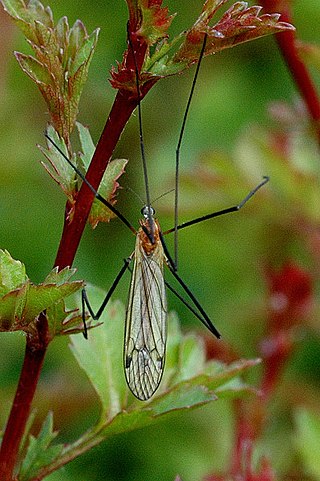
Austrolimnophila ochracea is a cranefly in the family Limoniidae. It is a Palearctic species with a limited distribution in Europe It is found in a wide range of habitats and micro habitats: in earth rich in humus, in swamps and marshes, in leaf litter and in wet spots in woods.

Cheilotrichia cinerascens is a palearctic species of craneflies in the family Limoniidae. It is found in a wide range of habitats and micro habitats: in earth rich in humus, in swamps and marshes, in leaf litter and in wet spots in woods.

Erioconopa trivialis is a Palearctic species of cranefly in the family Limoniidae. It is found in a wide range of habitats and microhabitats: in earth rich in humus, in swamps and marshes, in leaf litter and in wet spots in woods.

Erioptera fuscipennis is a Palearctic species of cranefly in the family Limoniidae.It is found in a wide range of habitats and micro habitats: in earth rich in humus, in swamps and marshes, in leaf litter and in wet spots in woods.
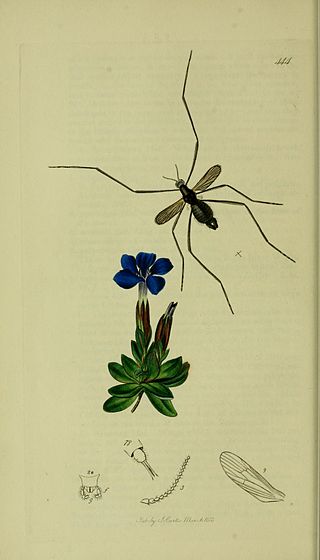
Molophilus ater is a Palearctic species of craneflies in the family Limoniidae.It is found in a wide range of habitats and micro habitats: in earth rich in humus, in swamps and marshes, in leaf litter and in wet spots in woods.

Ormosia nodulosa is a Palearctic species of craneflies in the family Limoniidae. It is found in a wide range of habitats and micro habitats: in earth rich in humus, in swamps and marshes, in leaf litter and in wet spots in woods.

Symplecta pilipes is a Palearctic species of cranefly in the family Limoniidae. It is found in a wide range of habitats and micro habitats: in earth rich in humus, in swamps and marshes, in leaf litter and in wet spots in woods.

Dactylolabis sexmaculata is a Palearctic species of cranefly in the family Limoniidae. It is found in a wide range of habitats and micro habitats: in earth rich in humus, in swamps and marshes, in leaf litter and in wet spots in woods.
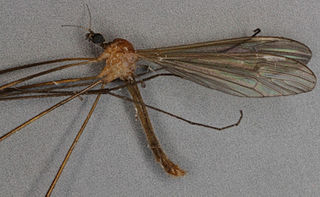
Euphylidorea aperta is a Palearctic species of cranefly in the family Limoniidae. It is found in a wide range of habitats and micro habitats: in earth rich with humus, in swamps and marshes, in leaf litter, and in wet spots within the woods.

Achyrolimonia decemmaculata is a Palearctic species of cranefly in the family Limoniidae.It is found in a wide range of habitats and micro habitats: in earth rich in humus, in swamps and marshes, in leaf litter and in wet spots in woods.
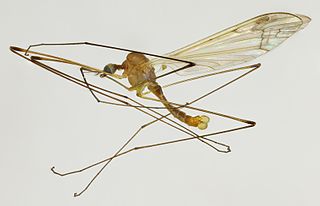
Dicranomyia chorea is a Palearctic species of cranefly in the family Limoniidae. It is found in a wide range of habitats and micro habitats: in earth rich in humus, in swamps and marshes, in leaf litter and in wet spots in woods.

Limonia phragmitidis is a Palearctic species of craneflies in the family Limoniidae.It is found in a wide range of habitats and micro habitats: in earth rich in humus, in swamps and marshes, in leaf litter and in wet spots in woods.

Rhipidia maculata is a Palearctic species of craneflies in the family Limoniidae.It is found in a wide range of habitats and micro habitats: in earth rich in humus, in swamps and marshes, in leaf litter and in wet spots in woods.
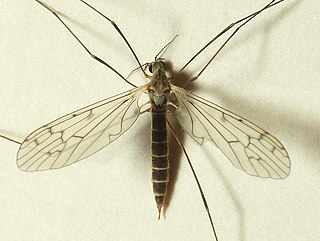
Symplecta hybrida is a Palearctic species of craneflies in the family Limoniidae.It is found in a wide range of habitats and micro habitats: in earth rich in humus, in swamps and marshes, in leaf litter and in wet spots in woods.




















